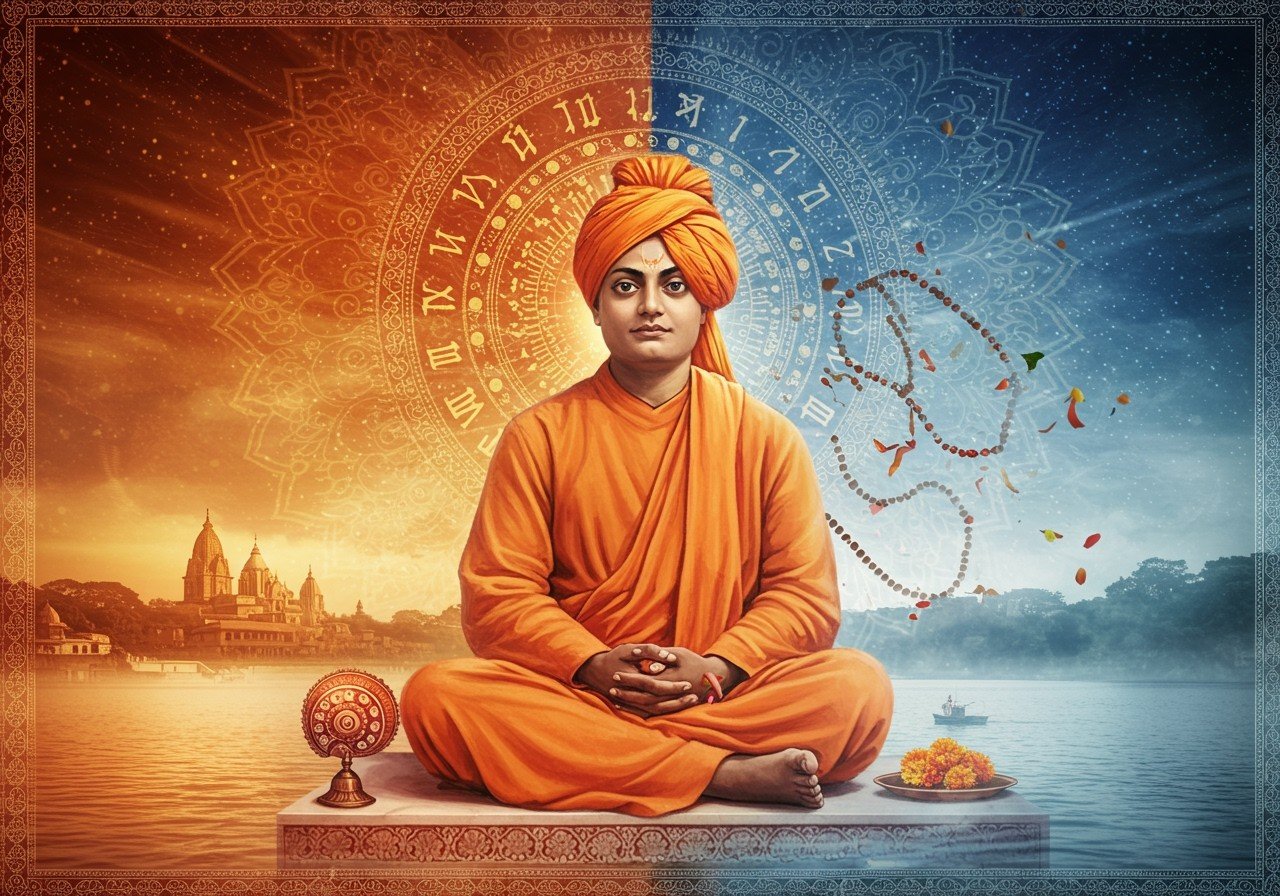
Swami Vivekananda, a name synonymous with spiritual wisdom and the revival of Hinduism, continues to inspire millions across the globe. He brought the profound philosophies of Vedanta and Yoga to the West, bridging cultures and fostering understanding. His teachings resonate deeply with those seeking truth and self-realization. However, his untimely demise at the young age of 39 has been a source of both sorrow and intrigue. Let’s delve into the life, teachings, and the circumstances surrounding the final moments of this extraordinary spiritual leader.
Early Life and Health of Swami Vivekananda
From his youth, Swami Vivekananda, born Narendranath Datta, displayed remarkable intellectual prowess and physical vigor. His early life was characterized by a deep thirst for knowledge and spiritual exploration. He embraced a rigorous lifestyle, dedicating himself to practices that nurtured both his mind and body. However, over time, the demands of his spiritual pursuits and extensive travels began to take a toll on his health. He battled various ailments, including insomnia, liver and kidney diseases, malaria, migraines, diabetes, and heart issues. Hereditary factors, too, may have contributed to his health challenges. Despite these physical struggles, his spirit remained undeterred, his commitment to his mission unwavering.
If you are looking to deepen your understanding of Swami Vivekananda’s teachings, Poojn.in offers a curated collection of books on his life and philosophy. Discover more here.
The Enigma Surrounding Swami Vivekananda’s Passing
Swami Vivekananda’s passing on July 4, 1902, at Belur Math, is shrouded in both reverence and mystery. While the official cause was attributed to a ruptured blood vessel in the brain, many of his followers believe he attained mahasamadhi—a conscious exit from the physical body. This perspective adds a layer of spiritual significance to his departure, suggesting a deliberate transition to a higher plane of existence.
Exploring the Theories and Beliefs
-
Mahasamadhi: Many followers believe Swami Vivekananda achieved mahasamadhi, consciously leaving his physical form to merge with the universal consciousness. This is often associated with the opening of the brahmarandhra, a subtle energy point at the crown of the head, signifying spiritual liberation.
You can find resources about meditation and spiritual practices at Poojn.in. Browse our collection.
-
Premonition and Prediction: Swami Vivekananda himself had foretold his departure before the age of 40. This prophecy adds another dimension to the narrative, suggesting an awareness and acceptance of his destined timeline.
To learn more about premonitions in Hindu traditions, explore this article.
Health Challenges and Final Day
Swami Vivekananda’s health was a constant challenge. He endured insomnia, liver and kidney issues, malaria, migraines, diabetes, and heart ailments. These physical burdens likely contributed to his relatively early demise. On his final day, July 4, 1902, he engaged in his usual spiritual practices, including three hours of meditation, teaching Sanskrit grammar and yoga philosophy, and planning for a Vedic college. At 7:00 pm, he retired to his room, requesting solitude. He peacefully passed away at 9:20 pm.
Create a serene meditation space with Poojn.in’s range of meditation cushions and shawls. Find your perfect fit.
The Final Resting Place
Swami Vivekananda’s cremation on the banks of the Ganga, opposite the cremation site of his guru, Sri Ramakrishna, holds deep symbolic meaning. This act signifies the enduring connection between guru and disciple, their spiritual journeys intertwined even in death.
Honoring Swami Vivekananda’s Legacy with Poojn.in
At Poojn.in, we offer a wide selection of puja items to help you honor and remember Swami Vivekananda. Our authentic collection includes:
- Pure Brass Incense Holders: For offering dhoop and agarbatti during your prayers and meditation.
- Premium Dhoop: Crafted with natural ingredients, creating a sacred atmosphere.
- Meditation Cushions: Providing comfort and support for your spiritual practices.
- Pure Cotton Meditation Shawls: Traditional white shawls for peaceful meditation.
- Brass Diyas: Illuminating your space with spiritual significance.
All our products are quality-checked and carefully packaged. We offer secure payment options and deliver across India. For personalized guidance, contact us:
- Call: 03369029784
- WhatsApp: 9476142738
- Visit: www.poojn.in
FAQs about Swami Vivekananda’s Death
What were the circumstances of Swami Vivekananda’s death? Swami Vivekananda passed away peacefully while meditating at Belur Math on July 4, 1902.
Why did he die so young? While the official cause was a ruptured blood vessel in the brain, his followers believe he attained mahasamadhi. His pre-existing health conditions, including insomnia, liver and kidney problems, malaria, migraines, diabetes, and heart disease, might have played a role in his early passing at 39. He had also predicted he wouldn’t live past 40.
What were his final moments like? He spent his last day teaching, meditating, and discussing plans for a Vedic college. He retired to his room in the evening and peacefully passed away in meditation.
A Legacy Beyond Time
Swami Vivekananda’s life, though short, left an enduring impact on the world. His teachings continue to inspire seekers of truth and self-discovery. His legacy transcends the physical realm, reminding us of the power of spirituality and the pursuit of higher consciousness. His message resonates across generations, a beacon of wisdom and compassion illuminating the path towards enlightenment.


